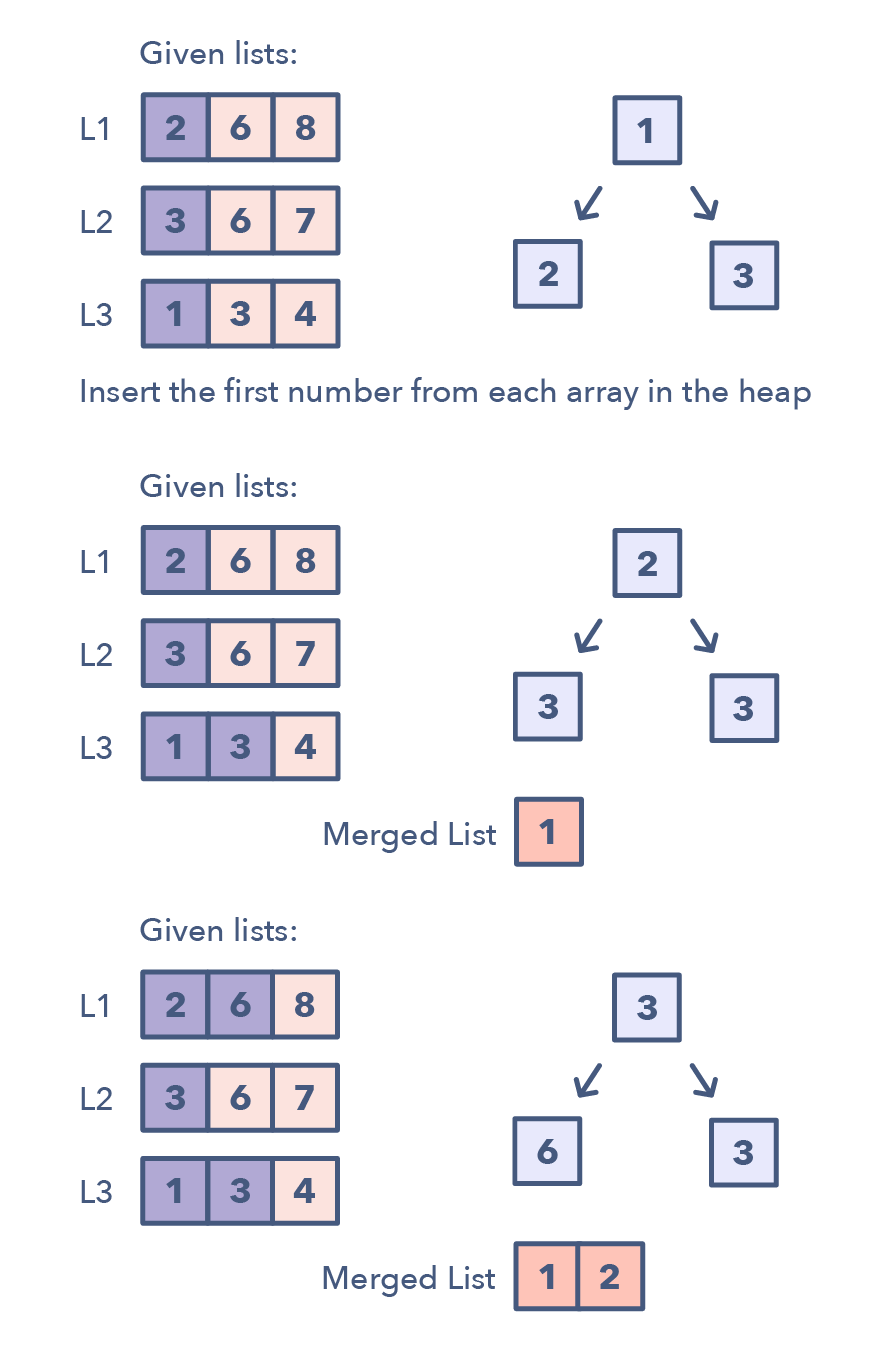Latest news about Bitcoin and all cryptocurrencies. Your daily crypto news habit.
Top 20 Linked List Coding Problems from Programming Job Interviews
 Image credit— Grokking the Coding Interview: Patterns for Coding Questions
Image credit— Grokking the Coding Interview: Patterns for Coding Questions
A linked list is another common data structure that complements the array data structure. Similar to the array, it is also a linear data structure and stores elements in a linear fashion.
However, unlike the array, it doesn’t store them in contiguous locations; instead, they are scattered everywhere in memory, which is connected to each other using nodes.
A linked list is nothing but a list of nodes where each node contains the value stored and the address of the next node.
Because of this structure, it’s easy to add and remove elements in a linked list, as you just need to change the link instead of creating the array, but the search is difficult and often requires O(n) time to find an element in the singly linked list.
This article provides more information on the difference between an array and linked list data structures.
It also comes in varieties like a singly linked list, which allows you to traverse in one direction (forward or reverse); a doubly linked list, which allows you to traverse in both directions (forward and backward); and finally, the circular linked list, which forms a circle.
Btw, there is no point solving these linked list based coding problems if you don’t have basic knowledge of data structure or you have not to refresh them in recent time. In that case, I suggest you to first go through a good data structure and algorithm course or book to revise the concept.
If you need recommendations, following are some of my the tried and tested resources to learn Data Structure and Algorithms in depth:
- Data Structures and Algorithms: Deep Dive Using Java for Java developers
- Algorithms and Data Structures in Python for those who love Python
- JavaScript Algorithms and Data Structures Masterclass by Colt Steele for JavaScript programmers
- Mastering Data Structures & Algorithms using C and C++ for those who are good at C/C++
- Data Structures in Java: An Interview Refresher to refresh important Data Structure and algorithms concepts in Java.
How to solve linked list Coding Problems?
In order to solve linked list-based questions, a good knowledge of recursion is important, because a linked list is a recursive data structure.
If you take one node from a linked list, the remaining data structure is still a linked list, and because of that, many linked list problems have simpler recursive solutions than iterative ones.
They are also solved using divide-and-conquer techniques, which breaks the problem into sub-problems until you can solve them. For example, for reversing a linked list, you break linked list until you have got just one node, at that point, you know how to reverse that linked list of one node, it’s nothing but the same node.
It’s very similar to recursion and actually, that smallest sub-problem you can solve becomes the base case for recursive solutions.
Frequently asked linked list Problems from Coding Interviews
Without wasting any more of your time, here are some of the most common and popular linked list interview questions from Coding interviews. I have linked to the solution wherever possible but I suggest you first try to solve the problem on your own, that will benefit you because you will think and learn. Once you have solved the problem or stuck after trying, you can look at the solution and learn from them.
- How do you find the middle element of a singly linked list in one pass? (solution)
- How do you check if a given linked list contains a cycle? How do you find the starting node of the cycle? (solution)
- How do you reverse a linked list? (solution)
- How do you reverse a singly linked list without recursion? (solution)
- How are duplicate nodes removed in an unsorted linked list? (solution)
- How do you find the length of a singly linked list? (solution)
- How do you find the third node from the end in a singly linked list? (solution)
- How do you find the sum of two linked lists using Stack? (solution)
- How do you reverse a linked list in place? (solution)
- How to add an element at the middle of the linked list? (solution)
- How do you sort a linked list in Java? (solution)
- What is the difference between array and linked list? (answer)
- How to remove Nth Node from the end of a linked list? (solution)
- How to merge two sorted linked list? (solution)
- How to convert a sorted list to a binary search tree? (solution)
- Given a linked list and a value x, partition it such that all nodes less than x come before nodes greater than or equal to x. (solution)
- How to remove duplicates from a sorted linked list? (solution)
- How to find the node at which the intersection of two singly linked lists begins. (solution)
- How to check if a given linked list is a palindrome? (solution)
- How to remove all elements from a linked list of integers which matches with given value? (solution)
These questions will help you to develop your problem-solving skills as well as improve your knowledge of the linked list data structure.
If you are having trouble solving these linked list coding questions then I suggest you refresh your data structure and algorithms skill by going through Data Structures and Algorithms: Deep Dive Using Java course.
If these questions are not enough then you can also check out this list of 30 linked list interview questions for more practice questions.
Useful Resources for Coding Interviews
If you need some useful resources to do well on your programming and Coding Job interview, here are some of the online courses and books you should check out:
- Data Structures and Algorithms: Deep Dive Using Java
- Grokking the Coding Interview: Patterns for Coding Questions
- Cracking the Coding Interview Book
- Master the Coding Interview: Data Structures + Algorithms
- Preparing For a Job Interview By John Sonmez
Now You’re Ready for the Coding Interview
These are some of the most common questions outside of data structure and algorithms that help you to do really well in your interview.
I have also shared a lot of data structure and algorithms questions on my blog, so if you are really interested, you can always go there and search for them.
These common coding, data structure, and algorithms questions are the ones you need to know to successfully interview with any company, big or small, for any level of programming job.
If you are looking for a programming or software development job in 2018, you can start your preparation with this list of coding questions.
This list provides good topics to prepare and also helps assess your preparation to find out your areas of strength and weakness.
Good knowledge of data structure and algorithms is important for success in coding interviews and that’s where you should focus most of your attention.
Other Articles You May Like
10 Algorithm Books Every Programmer Should ReadTop 5 Data Structure and Algorithm Books for Java Developers20+ String Coding Problems from Interviews50+ Data Structure and Algorithms Problems from Interviews30+ Array-based Problems from Coding InterviewsFrom 0 to 1: Data Structures & Algorithms in JavaData Structure and Algorithms Analysis — Job Interview10 Books to Prepare Technical Programming/Coding Job Interviews
Closing Notes
Thanks, You made it to the end of the article … Good luck with your programming interview! It’s certainly not going to be easy, but by following this roadmap and guide, you are one step closer to becoming a DevOps engineer.
P.S. — If you need some FREE resources, you can check out this list of free data structure and algorithm courses to start your preparation.
Top 20 Linked List Coding Problems from Programming Job Interviews was originally published in Hacker Noon on Medium, where people are continuing the conversation by highlighting and responding to this story.
Disclaimer
The views and opinions expressed in this article are solely those of the authors and do not reflect the views of Bitcoin Insider. Every investment and trading move involves risk - this is especially true for cryptocurrencies given their volatility. We strongly advise our readers to conduct their own research when making a decision.
